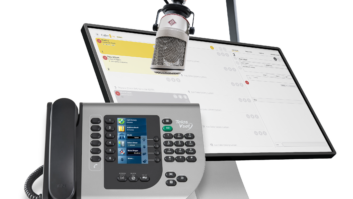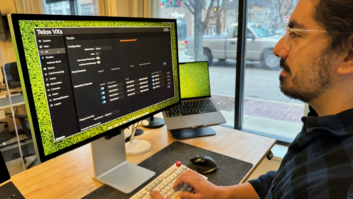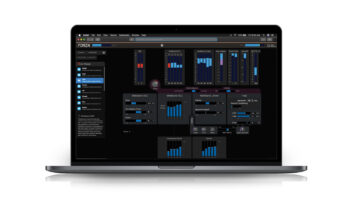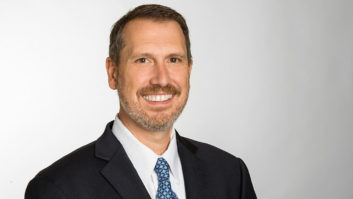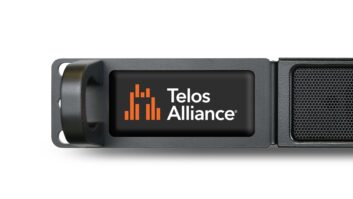Scott Stiefel was named CEO of Telos Alliance in January, the latest advancement in a career that began in 1994 when he joined the company two years out of college as a hardware and embedded systems engineer.
He later became operations manager, then left in 2008 to work for ViaSat, but returned six years later as Telos chief operating officer. He has spent the past year as co-CEO with Tom Swidarski before taking the reins on his own.
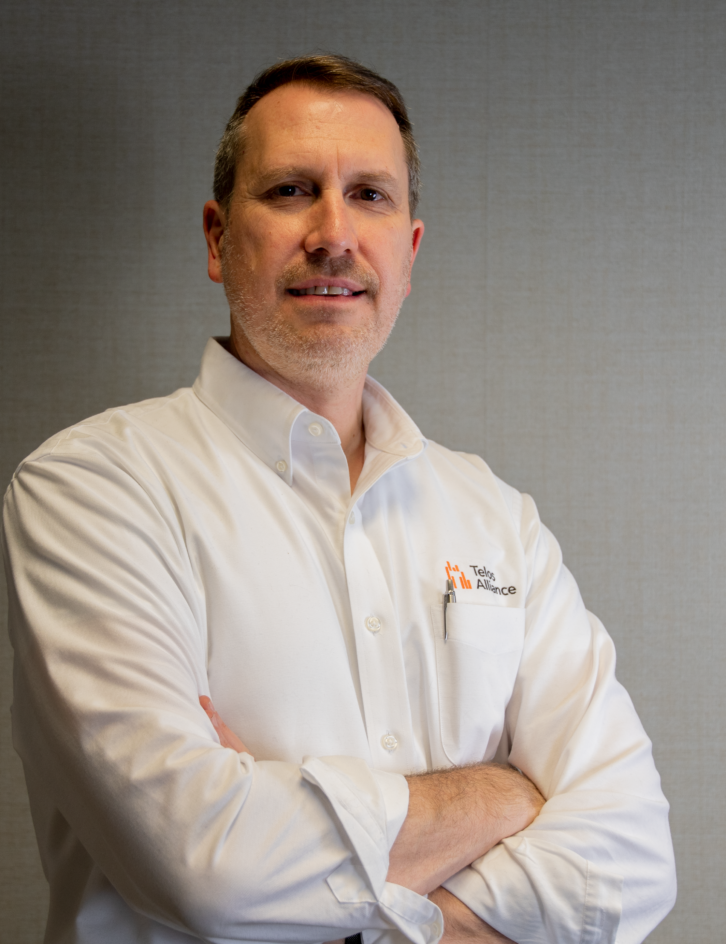
Swidarski remains on the company board and will serve as an advisor. Frank Foti remains chairman of the board and head of Omnia development.
Stiefel spoke with Radio World about his role and plans for the company.
Radio World: What’s changing?
Scott Stiefel: On my return to Telos in 2014, I was named COO so that Frank could focus more on the big picture. I’ve essentially run the company on a day-to-day basis from that point; and now I’ll be setting direction and be more of a public face, getting out on the road meeting with partners and clients.
RW: In 2018 the company brought in Tom Swidarski from outside of broadcast, while Frank became executive chairman. What was the reason for those changes?
Stiefel: Frank began to look at where his passion was and what he was good at. He wanted to focus on the next generation of Omnia products, meet with customers and bring products he’d been working on to fruition. He wanted to be a visionary for the company rather than play the traditional role of CEO.
I’d been back for four years as COO but had not run an entire company. The idea was to bring in somebody seasoned to tutor and mentor me. This is the role that Tom had been playing for other companies after he departed Diebold. From my perspective, how often do you get the chance to sit alongside somebody who’s run what was essentially a Fortune 500 company and learn from them on a day-to-day basis?
My mission is to continue our path in terms of the maturity of the organization, as well as its transition from a primarily hardware-based company into the one we’re becoming that also involves virtualization, enterprise software, networking and taking AoIP into the cloud and private server farms.
[Related: “Telos Alliance Names Scott Stiefel as CEO“]
RW: Who are the owners, and how many employees are there?
Stiefel: There are roughly half a dozen shareholders. Frank is majority shareholder. Tom is second largest and vice chairman of the board. I’m a shareholder as well.
We have roughly 125 people worldwide. We didn’t have any reduction in force through the pandemic.
RW: What’s the state of your business and how has it evolved?
Stiefel: From a product development standpoint we’re incredibly healthy. We have an enormous pipeline. Derek Pilkington, our EVP of research and development, walks around with a mug that says “More ideas than time.”
In television we now have intercom, loudness control, audio processing, Next Generation Audio and enterprise software for file-based audio workflows. In radio, most people will be familiar with the areas we play in, from mixing and infrastructure to audio processing, telephony, codecs and streaming. We’re well positioned because of that diversification.
On the financial side, we’ve never been in a better position —from the discipline in which we run the company, our weekly strategy sessions and monthly business reviews, to the balance sheet, which is healthier than it’s ever been in the history of the company.
When I came back in 2014, my goal was to break down barriers between the brands. As you know, the company had started with Telos Systems and Steve Church; then Cutting Edge, later Omnia, when Frank joined; then we had the Axia product line, and we added Linear Acoustic, Minnetonka, 25-Seven Systems.
Each of these product lines was extremely well regarded but there wasn’t a lot of sharing of information or resources internally. So one of the first things I did was to reorganize to make it much more centralized.
It’s in the culture where Tom probably has had the biggest impact. He swept away the final territoriality and implemented processes for the executive team to eliminate any friction that remained. We’re really running smoothly in how we come up with product or service ideas and implement them.
We want to be the partner for every broadcaster as they create their ecosystems and infrastructures, to allow them to use best-in-class products — virtual or hardware — and have them work seamlessly at the lowest cost, while producing the highest results for content creation.
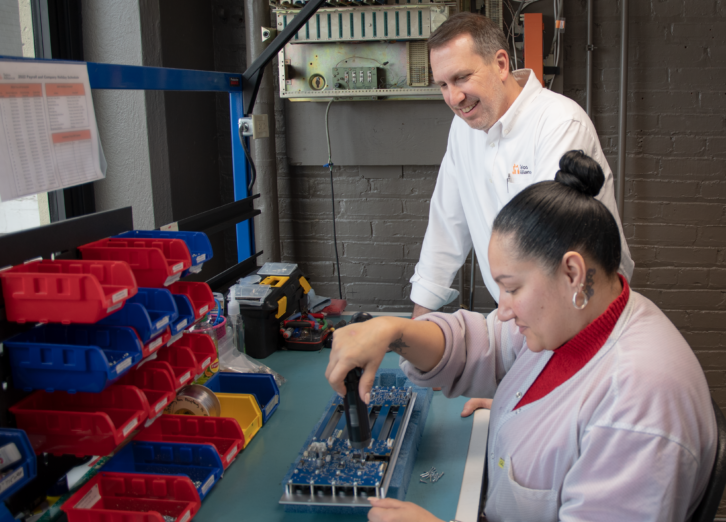
RW: How will Telos stay relevant when so much of the industry is turning from hardware to these other solutions?
Stiefel: On the educational front we began to create webinars on a regular basis, our Container University, YouTube videos and other educational aspects to help train the industry so that they can begin that migration to virtualization, containerization and cloud.
Beyond that, our most recent move has been to create a Professional Services group. We’ve expanded our best-in-class customer support to include professional services — we can send people on-site, or log into client systems and help configure their Telos Alliance products. We can spec out solutions; we can make sure their workflows and ecosystem are ready to receive the virtual or containerized products and that they’re specifying the right servers. And we can ride alongside those customers until they go on air, and be available beyond that point as well.
The pivot to a services organization is going to be critical. The entire industry is transitioning from a product and appliance basis to an IT infrastructure basis. That’s a big, big change for a lot of people.
There are still a fair number of broadcasters who haven’t made the transition to audio over IP; and without it, you’re never going to make the transition to a pure IT infrastructure play. So it will be a two-phase transition for many broadcasters.
For those who have made the transition, it will simpler; they’re already living in an IT and network world. But then what if their servers, the equipment or the applications are not even on premises? How do they manage those? What about cybersecurity? Then there are the concepts of “ground to cloud” and “cloud back to ground” — what equipment is needed, what technology and standards will I have to understand?
Another change is seeing the cost models going from pure cap-ex to a “pay as you go” model. If I only have a call-in talk show during morning drive, why do I need to buy a piece of equipment that’s going to be sitting idle for the other 22 hours of the day? If I can use a cloud services model for putting callers on the air and only pay for two hours a day, it opens all sorts of possibilities.
It’s an incredibly exciting time — the flexibility it offers in terms of operations and workflow, and how people all around the world can contribute to content in real time.
RW: Are these trends the same in television?
Stiefel: The technology is definitely changing in the same way. We’re seeing complete virtual cloud-based production systems launching into the market. You’ve got the AMPP Platform from Grass Valley, Viz Now from Vizrt, and there are a host of others moving in that direction.
It’s more complicated because the bandwidth requirements are much, much higher, the compute requirements are much higher for video than for audio, but it’ll be that same challenge. A number of broadcasters are making the transition globally.
I think the next big audio challenge on the television side is going to be the impact of ATSC 3.0 in the United States, and globally with Next Gen Audio and all of the possibilities it offers.
We’ve got partnerships with companies like Dolby and Fraunhofer. The question mark is how quickly are broadcasters going to adopt? And is immersive audio or some other feature going to be the key selling point? Is there something else within these new standards that’s going to unlock value?
We need to make sure we’re riding alongside our customers to provide cutting-edge gear for that.
RW: What should we expect from Telos in future?
Stiefel: You’ll see the continued evolution of our virtual and container products. Decades ago we made the decision to move our hardware products from a pure DSP chip type platform to an i86 platform. Since then, most products have made that transition, which has prepared us to migrate that code to a server platform and beyond into a virtual machine and then the cloud. The pace of that transition is increasing every year.
You’ll also see expansion of command and control with products like Pathfinder, the dashboard software for Infinity —increased capability and more interfaces to third-party products.
That doesn’t mean we’re abandoning hardware. We’ve got a slew of products coming. But they’ll be constructed so they can evolve in parallel to the container. For people who are still comfortable with hardware but who may want to migrate a particular application to the cloud, they’ll see the same user interfaces, the same workflow.
We have more talent in house than we’ve ever had, people seasoned in the industry who understand workflows and customers, with a really strong bench behind them. I’ve seen Telos evolve from a pure telephony company. Certain technologies — like the DSP in the telephony products and the idea of marrying MP3 with ISDN — really transformed certain areas of radio. Now virtualization, containerization, disaster recovery and those changing cost structures are going to have a much bigger impact on the broadcast industry.
I love that Telos has always seemed to be right at the center of each inflection point. And, you know, our mojo is still very much in force.






